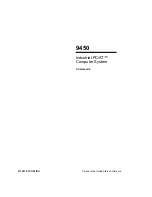
User Manual
Doc. Number: ESO-323064
Doc. Version: 2
Released on:
Page:
58 of 82
Document Classification: Public
Slit Viewer (SV)
details:
·
Use the last sky measurement for the SV
(TSF:
SEQ.SV.USELASTSKY
):
Generally, one can use the last sky measurement and therefore leaves this parameter
untouched from its default value, YES (i.e.,
SEQ.SV.USELASTSKY
=T). However, if one
observes a faint target or if the SVGS is not particularly bright (i.e., H<12), a new sky
exposure should be obtained. In this case set the flag to NO (i.e.,
SEQ.SV.USELASTSKY
= F).
·
RA/DEC offset to sky
(TSF:
TEL.SKY.OFFSETALPHA,
TEL.SKY.OFFSETDELTA
) are only relevant if
SEQ.SV.USELASTSKY
= F. By default, the
sky exposures are taken 30‘’ in RA and DEC from the science target position. In crowded
fields however, the RA/DEC offset might need to be fine-tuned to prevent from acquiring
the sky exposure in a region highly contaminated by other sources. These offsets are
usually executed after the telescope started the field tracking (i.e., step 1 see above), and
right before moving to the NGS (if the AO correction is used) or to the SVGS (for NoAO
observations).
The convention for these RA, DEC offsets is:
TEL.SKY.OFFSETALPHA
= α
SKY
-
α(NGS)
TEL.SKY.OFFSETDELTA
= δ
SKY
-
δ(NGS)
SVGS details:
·
RA/DEC offset between target and SV guide star
(TSF:
TEL.TARG.OFFSETALPHA, TEL.TARG.OFFSETDELTA
) correspond to the offsets, in
arcsec, necessary to move from the target to the SVGS. If α(SVGS) and δ(SVGS) are the
coordinates of the SVGS, the sign convention is as follows:
TEL.TARG.ALPHA + TEL.TARG.OFFSETALPHA
= α(SVGS)
TEL.TARG.DELTA + TEL.TARG.OFFSETDELTA
= δ(SVGS)
In other words,
TEL.TARG.OFFSETALPHA
and
TEL.TARG.OFFSETDELTA
are positive if
the SVGS is located to the East and North of the target. Note that during the OB execution
the SVGS must be kept always within the SV field of view (see Figure 25). Note that these
parameters must be provided only if no differential tracking is needed.
Metrology details:
·
Run Metrology?
(TSF:
SEQ.METROLOGY.ST
) CRIRES is sensitive to changes of its
opto-mechanical setup with positions of spectral lines typically not being reproducible to
better than 1.5 pixels in the dispersion direction. The best mitigation strategy is to not
change setups between the calibration and science frames. However, even then, drifts may
occur. To ensure the highest accuracy of the position of the slit image on the detector,
CRIRES
offers a metrology function with the goal to ensure repeatability of both the
wavelength zero point and dispersion of a given echelle setting to <1/10 pixel along the
dispersion direction. Note that the metrology is only available for wavelength < 2500 nm.
Caution should be used when enabling metrology in multiple science templates due to the
associated overheads. In general, this should only be enabled (i.e., flag set to yes,
















































